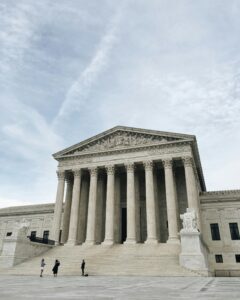A September 2022 FTC Staff Report has revealed that manipulative marketing practices by businesses, termed “dark patterns,” is on the rise. The Federal Trade Commission (“FTC”) is a United States government agency whose primary mission is to protect consumers and enforce civil antitrust laws. Since the advent of direct mail and brick and mortar retail, some unscrupulous businesses have utilized tactics, such as hidden disclosures and confusing cancellation policies to create unwilling repeat customers. However, the shift to online retail has created an alarming amount of growth in the sophistication and utilization of dark patterns. Coined in 2010 by a user experience specialist named Harry Brignull, the term “dark patterns” describes subtle design tricks that influence consumers into making unintended decisions, or to the same end, discourage behavior that hurts a business’s bottom line. On April 29, 2021, the FTC hosted a public workshop on dark patterns and their effect on consumer behavior. The Staff Report summarized the panelists’ concern – that the continued use and development of dark patterns in the digital space can pose a heightened risk to consumers. Issuing the Staff Report may serve as the FTC’s final warning. Even though dark patterns manipulate user behavior in a subversive manner, these practices are now firmly on the FTC’s radar.
What Are Common Examples of Dark Patterns?
Numerous types of dark patterns exist, but the FTC has classified them into one of four general categories: 1) Design elements that induce false beliefs; 2) Design elements that hide or delay disclosure of material information; 3) Design elements that lead to unauthorized charges; and 4) Design elements that obscure or subvert privacy choices. Some websites disguise advertisements by misleadingly designing them to appear as unbiased product reviews or independent news articles. Some companies induce false beliefs by including “from” lines in emails that mislead consumers into thinking that they are being contacted by a news organization, such as CNN, for example. Baseless countdown timers create a false sense of temporal urgency by displaying an arbitrary countdown clock to pressure consumers to complete their purchases right away. Some businesses hide material information in fine print, behind nondescript hyperlinks, or in pop-up boxes that only appear if a consumer mouses over the correct area of their websites. According to the FTC, preselected defaults, such as pre-checked “accept tracking” cookies boxes, can subvert privacy choices. Some companies offer free trials, but automatically subscribe consumers if they do not affirmatively cancel, leading to unauthorized charges, in violation of state and federal law. Making matters worse, the channels by which consumers must cancel their subscriptions are often extremely convoluted and lengthy. New York and California have already enacted laws to prevent companies from forcing subscription continuity with hard to navigate cancellation procedures. Many online shoppers have complained that they not only have encountered multiple dark patterns in a single session, but also felt the resulting frustration of dealing with them.
The FTC Will Revise the Rules and Regulations it Has in Place to Address Dark Patterns
In pursuit of its mission to protect consumers from their own actions, or inactions, the FTC administers a wide variety of laws and regulations, including the Federal Trade Commission Act (the “Act”). Section 5(a) of the Act prohibits “unfair or deceptive acts or practices in or affecting commerce.” An act or practice is deceptive where a representation, omission, or practice misleads or is likely to mislead the consumer; a consumer’s interpretation of the representation, omission, or practice is considered reasonable under the circumstances; and the misleading representation, omission, or practice is material.” An act or practice is “unfair” if it “causes or is likely to cause substantial injury to consumers which is not reasonably avoidable by consumers themselves and not outweighed by countervailing benefits to consumers or to competition.”
In light of the findings contained in its September Staff Report, the FTC will most likely make sweeping changes to counter the sophistication and proliferation of dark patterns. As noted above, states have passed laws to tighten regulations applicable to subscription enrollment and cancellation requirements. This is not necessarily bad news for those that engage consumers online. Businesses simply have to be willing to adapt and adopt a position whereby consumers are retained through loyalty, and not through user interface design. To do so properly, companies should retain counsel that is experienced in the online marketing space.
If you require assistance in complying with the FTC’s rules and regulations as they ramp up enforcement against dark patterns, please email us at info@kleinmoynihan.com or call us at (212) 246-0900.
The material contained herein is provided for information purposes only and is not legal advice, nor is it a substitute for obtaining legal advice from an attorney. Each situation is unique, and you should not act or rely on any information contained herein without seeking the advice of an experienced attorney.
Attorney advertising
Photo by Ales Nesetril on Unsplash
Similar Blog Posts:
FTC Guidelines on Negative Option Marketing Released




